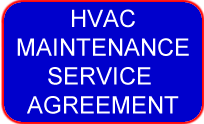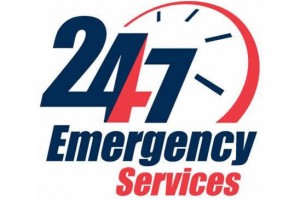Air Conditioners
On a hot, humid summer day, few amenities add to quality of life more than home air conditioning. An air conditioner cools, dehumidifies, and filters your home’s air, making it cleaner and far more comfortable. This is, no doubt, why central air conditioning has become common in homes located in warm climates.
Types of Air Conditioners
Unlike a window, portable, or in-the-wall air conditioner, which cools a single area, a central air conditioner distributes conditioned air throughout a house. It has a condenser unit that sits outdoors, a central air-handling unit such as a forced-air furnace or heat pump that is typically located in the basement or attic, and ductwork routed throughout the house for delivering cooled air from the air handler.
A heat pump is related to an air conditioner. It is essentially a central air conditioner that can be reversed in winter to heat a house. Both air conditioners and heat pumps use refrigeration technology to achieve the transfer of heat or cold. (For more information about how refrigeration works, see How a Central Air Conditioner Works.)
The first decision you will face when choosing an air conditioner is whether to opt for a whole-house air conditioner, one or more room air conditioners, or a heat pump. (For more information on the pros and cons of each, see Air Conditioners: Central or Portable?)

Central air conditioning is the most popular of the options, particularly for a home that is equipped with a forced-air heating system or, even better, an existing whole-house central air conditioner.
Central Air Conditioners: The Ozone Issue
If you’ve kept up with consumer reports, you may be aware that the refrigerant used in some air conditioners has been targeted as an ozone-depleting substance. The problem is that aging, sealed systems may develop leaks and allow the refrigerant to escape into the atmosphere.
Prior to December 31, 1995, a common refrigerant in older cars, some commercial air conditioners, and certain refrigerators was CFC-12, or R-12. Now, the commonly used refrigerant in home air conditioners is R-22, an HCFC (hydrochlorofluorocarbon) that is safer but can still be a problem if it reaches the stratosphere. Production of HCFCs will be phased out eventually, too.
The refrigerant used in new car air-conditioning systems is R134a, an HFC (hydrofluorocarbon) that does not contain ozone-damaging chlorine atoms. Carrier was the first to produce a residential central air-conditioning system—the WeatherMaker 134a—that uses this refrigerant. Other manufacturers are introducing similar systems.
Sizing a Central Air Conditioner
Manufacturers produce whole-house central air conditioners in a range of sizes, which raises one of the most important questions you’ll have to answer when shopping for one: How big should it be?
An air conditioner’s ability to produce cooled air is measured in BTUs (British Thermal Units) per hour and in tons. A BTU measures heat output. One BTU equals the amount of energy needed to increase 1 pound of water by 1 degree F. One ton is the equivalent of 12,000 BTUs per hour, or the amount of energy it takes to melt 1 ton of ice in a day.
Central Air Conditioning Energy Efficiency
 Air conditioners are expensive to operate because of today’s high cost of energy, so it doesn’t make sense to buy one that you can’t afford to run. The name of the game is efficiency—an air conditioner’s ability to convert energy (electricity) into cooling in the most cost-effective way.
Air conditioners are expensive to operate because of today’s high cost of energy, so it doesn’t make sense to buy one that you can’t afford to run. The name of the game is efficiency—an air conditioner’s ability to convert energy (electricity) into cooling in the most cost-effective way.
To reduce wasted energy, the U.S. Department of Energy has established minimum efficiency standards for air conditioners. Every unit is given an efficiency rating, called a SEER (Seasonal Energy Efficiency Rating). This is listed on the yellow Energy Guide label posted on each unit. It’s important to look at these ratings since the higher the number the more efficient the unit and the less it will cost to provide cooling.
The minimum allowable SEER rating for new central air conditioners had been 10, but it was changed to 13 in January 2006. The most efficient models have SEERs of 15–17.
When shopping, pay attention to the terminology. “High-efficiency” models were those rated a 10. “Super-high-efficiency” models had a SEER of 11–12. “Ultra-high-efficiency” models were 12 and over.
To achieve particularly high SEERs, air conditioners may have any number of energy-saving features, typically large coils for more efficient heat transfer and variable-speed blower and fan motors to reduce electricity consumption.
The York Stellar Ultra features two compressors that work in tandem when high cooling capacity is needed; the rest of the time, only one of the compressors operates. These, combined with a variable-speed motor, achieve a SEER rating of 16.7.
Programmable thermostats also help by offering precise control. Another energy-saving feature is a fan that stays on long enough to utilize residual cool air that remains after the compressor turns off. And some units have an indicator light that lets you know when the filter needs changing, which also boosts efficiency by ensuring proper maintenance.
Do you need an ultra-high-efficiency air conditioner? Not necessarily. Of course, for the sake of the environment—from energy usage to greenhouse-gas emissions—the higher the efficiency the better. But, in terms of dollars, the savings compared to the premium you will pay may not pencil out for you, particularly if you live in a climate that requires little cooling during the year or if your home isn’t tightly insulated. On the other hand, where an air conditioner must run frequently during the year, a highly efficient model will pay for itself in energy savings over a period of years.
One note about replacing an aging system: Be sure to replace both the outdoor condensing unit and the indoor evaporator. If you just replace the condensing unit, potential gains of a higher-efficiency unit may be lost.
Central Air Conditioner Cost Considerations
Installing a central air conditioner is not a do-it-yourself project, so you should discuss the following with a qualified air-conditioning contractor:
First, find out whether your house can readily accept an air-conditioning system. Installing one usually only makes sense if a house is being newly constructed or has a forced-air heating system that the air conditioner can piggyback on. Retrofitting the needed ductwork is simply too expensive in most cases.
Even in a home with usable ductwork, a standard central air-conditioning system can cost $3,000–$6,000 or more installed. Because the cost depends on so many variables, the only way to pinpoint it is to get at least three bids.
Central air conditioners run on electricity for the compressor, blower, and fan. In some hot climates, where an air conditioner must run frequently, this can push energy costs sky-high. The amount of electricity needed to run a central air conditioner depends on two things: cooling capacity and energy efficiency, so make sure you inquire about both before making your purchase.
Central Air Conditioner Warranties
Before purchasing a central air conditioner, ask for—and read—the warranty and be sure you understand the terms. Warranties can vary significantly from one manufacturer to another. A warranty may cover most of the unit under one set of terms or offer differing coverage on various parts of the air conditioner.
For example, Whirlpool covers all parts of the mechanical and refrigeration systems (except the air filter) for five years, including labor. Carrier covers the air-conditioning unit and authorized labor for repair or replacement for one year. With Carrier, the refrigeration components, including the compressor, condenser, evaporator, connecting tubing, and refrigeration charge—including labor for repair or replacement—are covered for years two through five under an extended warranty.
With many manufacturers, while the parts may be covered, the labor for replacing such parts as the motor, solenoid, relays, switches, and fans may not be covered by warranty.
And then there is the “Limited Lifetime Warranty.” Amana, for example, offers this and will cover the compressor of a high-efficiency air conditioner or heat pump for as long as you own the house.
The bottom line is to read the warranty and understand what it does and does not cover.
Be advised that a warranty will be void if the air conditioner is worked on by a non-authorized serviceperson and that it does not cover standard maintenance, cleaning, or damage that is caused by neglecting maintenance.




